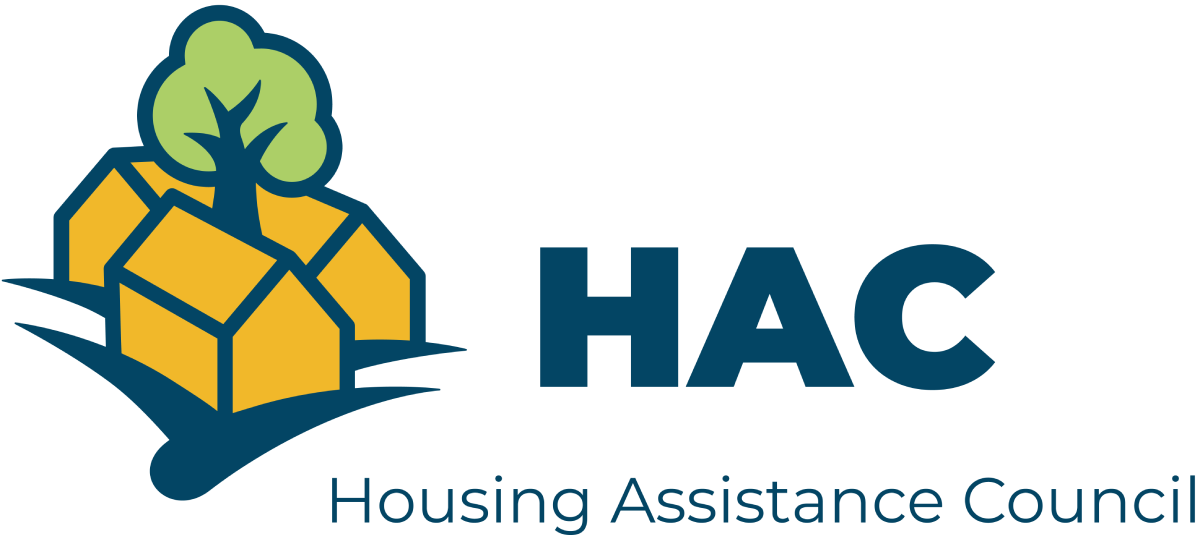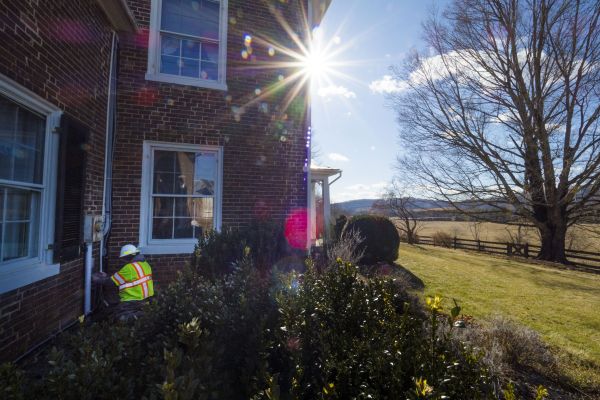Final FY24 Spending Bill Cuts Most Rural Housing Programs
All but three of USDA’s rural housing programs receive funding cuts in the final minibus appropriations bill released by congressional leaders on March 3. The bill is expected to pass before funding for several agencies, including USDA, runs out on March 8. Section 521 Rental Assistance, Section 542 vouchers, and Section 538 rental housing guarantees are the only rural housing programs that are not reduced.
— HAC’s analysis of FY24 appropriations for HUD is available here. —
The bill does include a new rental preservation effort supported by HAC and many others. It establishes a pilot program to decouple up to 1,000 Section 521 Rental Assistance units from Section 515 or 514 mortgages. Currently, when one of these mortgages is fully paid off, the tenants lose their Rental Assistance. The bill limits decoupling to situations where USDA determines that a maturing loan “cannot reasonably be restructured with another loan or modification.” Congress’s explanatory statement on the bill “directs the Department to have strong stakeholder engagement and to provide the [House and Senate Appropriations] Committees with monthly updates on the implementation of this policy.”
Other rental housing preservation efforts are reduced, with Section 515 falling from $70 million in FY23 to $60 million this year and Multi-Family Rental Preservation and Revitalization (MPR) cut back from $36 million to $34 million. The Rental Preservation Technical Assistance program receives $1 million, half as much as in FY23, although it was not included at all in the Administration’s budget or the House or Senate bills.
USDA’s flagship Section 502 direct mortgage program, which enables low- and very low-income families to buy their first homes, is cut from $1.25 billion in FY23 to $880 million in FY24. Even Section 502 guarantees, which serve slightly higher income households than Section 502 direct and cost the government very little, are reduced from $30 billion to $25 billion. The self-help housing program, which enables local nonprofit organizations to help families build their own homes, is also cut, from $32 million to $25 million.
This agreement on funding for FY24 – which started on October 1, 2023 – comes just one week before the President’s budget for FY25 will be released, kicking off the process of determining funding for next year.
| USDA Rural Dev. Prog.
(dollars in millions) |
FY23 Final Approp. | FY24 Admin. Budget | FY24 House Committee Bill H.R. 4368 |
FY24 Senate Bill H.R. 4366 |
FY24 Final |
| 502 Single Fam. Direct | $1,250 | $1,500 | $881 | $850 | $880 |
| Nat. Amer. SF Demo. | 7.5 | 12 | 5 | 7.5 | 5 |
| 502 Single Family Guar. | 30,000 | 30,000 | 30,000 | 30,000 | 25,000 |
| 504 VLI Repair Loans | 28 | 50 | 25 | 28 | 25 |
| 504 VLI Repair Grants | 32 | 40 | 25 | 32 | 25 |
| 515 Rental Hsg. Direct Lns. | 70 | 200 | 60 | 60 | 60 |
| 514 Farm Labor Hsg. Lns. | 20 | 50 | 13 | 25 | 15 |
| 516 Farm Labor Hsg. Grts. | 10 | 18 | 5 | 10 | 7.5 |
| 521 Rental Assistance | 1,488 | 1,650 | 1,607 | 1,608 | 1,608 |
| 523 Self-Help TA | 32 | 40 | 25 | 32 | 25 |
| 533 Hsg. Prsrv. Grants | 16 | 30 | 10 | 16 | 10 |
| 538 Rental Hsg. Guar. | 400 | 400 | 400 | 400 | 400 |
| Rental Prsrv. Demo. (MPR) | 36 | 75 | 34 | 35 | 34 |
| 542 Rural Hsg. Vouchers | 48 | 38 | 48 | 48 | 48 |
| Rental Prsrv. TA | 2 | – | – | – | 1 |
| Rural Cmnty. Dev’t Init. | 6 | – | 5 | 6 | 5 |
| Community Facil. Loans | 2,800 | 2,800 | 2,800 | 2,800 | 2,800 |
| Community Facil. Grants | 325.5* | 87 | 317* | 32 | 5 |
| Tribal Colleges CF Grts | 10 | ? | 6 | 10 | 8 |
| Community Facil. Guarantees | 650 | 650 | 650 | 650 | 650 |
* These Community Facilities grant amounts include funds earmarked by members of Congress for specific projects (called “Congressionally Directed Spending” or “Community Project Funding”).
Senate Minibus Includes HUD and USDA
On November 1, 2024, the Senate passed a “minibus,“ H.R. 4366, that includes funding for USDA, Transportation-HUD, and Military Construction-VA. On September 28, the House voted against its USDA appropriations bill.
Senate and House Committees Adopt Different Figures for FY24 USDA Spending
On June 22, the Senate Appropriations Committee passed its version of USDA’s funding bill for fiscal year 2024. Senate appropriators are using the spending limits set in the Fiscal Responsibility Act — the debt ceiling compromise — while the House is developing spending bills to fit lower caps. As a result, the Senate bill proposes higher amounts than the House for most rural housing and community facilities programs. It would keep most of them at FY23 levels.
Funding Levels
While keeping most programs at FY23 spending levels, the Senate bill would reduce funding for the flagship Section 502 direct mortgage program. It proposes $850 million rather than this year’s $1.25 billion. It would also increase the lowest possible subsidized interest rate for Section 502 direct loans to 2% from the current 1%.
Rescissions
The bill would cancel some funds appropriated in prior years but not yet spent: $3 million in the rural voucher account and $30 million intended for Section 504 grants.
Rental Preservation
The Senate bill, unlike the House’s version, adopts the administration’s proposal for decoupling Section 521 Rental Assistance from Section 515 and 514 mortgages in limited circumstances. When a USDA mortgage is paid off, an owner could continue to receive RA if the property has RA already and there is no other way to preserve the property as affordable housing. Decoupled RA could be provided for a maximum of 15,000 units in FY24.
Other Provisions
The report that accompanies the Senate bill “encourages” USDA to increase maximum grants for the Rural Community Development Initiative from $250,000 to $500,000 and “to allow an advance of 25 percent of grant funds prior to a match being supplied.”
The final section of the bill (Title VII) is separate from the main provisions relating to housing and CF programs but contains several housing-related provisions, including the Section 502 interest rate change (Sections 771 and 774) and rescissions (Sections 732 and 744). It would also extend the terms of Section 523 self-help land development loans and Section 524 site development loans to five years instead of the current two (Sections 761 and 762). It would raise the statutory cap on the number of rural housing vouchers, which has been raised for one year at a time in past appropriations bills, from 5,000 to 10,000.
House Committee Passes FY24 USDA Appropriations
The full House Appropriations Committee approved a fiscal year 2024 funding bill for USDA on June 14, 2023. The committee made some changes in the bill passed by the Agriculture Appropriations Subcommittee on May 18, but none were related to housing and community facilities. The measure retains the housing and CF program cuts adopted by the subcommittee.
New Details on Proposed Cuts
The full House committee released report language to accompany the bill, which provides some details not previously available. The report makes clear there would be a large cut to the pool of funding for standard community facilities grants that would be available through USDA’s competition: the total would plunge by 86%, from $25.3 million in FY23 to just under $3.6 million in FY24. Section 514 loans for farmworker housing would fall from $20 million in FY23 to $13 million in FY24, and Section 516 grants would drop from $10 million to $5 million. Section 504 grants and Section 533 would also decrease.
Like its subcommittee, the House Appropriations Committee states that its $1.607 billion will “fully fund the [Section 521 Rental Assistance] program,” without explaining why the amount differs from the administration’s budget request or whether “all” includes the 27,000 contracts added by the American Rescue Plan Act. (The administration’s total also includes $6 million for RA in new Section 515 units; that amount is not included in the House bill because it would not provide Section 515 funding for new units.)
Disadvantaged Farmers Program Cancellation Proposed
The full House Appropriations Committee adopted an amendment, proposed by Agriculture Subcommittee Chair Andy Harris (R-Md.), to eliminate a program for disadvantaged farmers that was created in the Inflation Reduction Act. The IRA program replaced one created in the American Rescue Plan Act. The ARPA program would have aided “socially disadvantaged” farmers and ranchers because lawsuits previously determined that USDA discriminated against them. Then white farmers and ranchers sued, claiming it was discriminatory to pay people based solely on their race/ethnicity. While those suits were pending, Congress replaced the ARPA program with a new one in IRA to provide payments to anyone, regardless of race/ethnicity, who could show they experienced past discrimination in USDA farm lending programs. It also included grants and loans to improve land access (including heirs’ property and fractionated land issues) for underserved farmers, ranchers, and forest landowners. And it funded outreach, education, research, equity commissions, and other aid.
The House bill also cancels diversity, equity, and inclusion efforts at USDA. During the markup Rep. Harris noted that it would not impact USDA’s civil rights office.
House Subcommittee Releases Rural Housing Funding Bill
On May 18, 2023, the House Agriculture Appropriations Subcommittee approved a fiscal year 2024 funding bill for USDA, proposing to fund many rural housing programs at levels lower than those requested in the administration’s budget, and in some cases lower than the amounts appropriated in FY23 or FY22.
The full House Appropriations Committee scheduled its own mark-up for May 24, then postponed it without setting a new date.
The administration’s budget documents state that its $1.65 billion request for Section 521 would renew all current Rental Assistance contracts, including 27,000 contracts added by the American Rescue Plan Act. The subcommittee’s summary says its $1.607 billion “fully funds existing rental contracts to ensure rural residents will not be displaced,” but does not specifically mention the ARPA units and does not explain the discrepancy between its figure and the budget’s. The administration’s total also includes $6 million for RA in new Section 515 units; that amount is not included in the House bill because it would not provide Section 515 funding for new units.
The House bill would also rescind unspent monies from the American Rescue Plan Act and the Inflation Reduction Act and would prohibit USDA spending on climate-change-related items including energy efficiency.
The Senate has not yet released proposed appropriations bills.
White House Budget Requests Increases in Rural Housing Funding
March 13, 2023 — The White House’s detailed budget request for fiscal year 2024 would increase funding for almost all of USDA’s rural housing and community facilities programs.
View a recording or the slides from HAC’s webinar on Rural Housing in the Fiscal Year 2024 White House Budget, which examined the budget’s contents and what to expect over the coming months.
Initiatives Requiring Legislation
The budget proposes legislative changes for Section 502 direct homeownership loans and for multifamily housing preservation.
For the Section 502 direct program, subsidy “recapture” would be eliminated. Recapture requires that, when a low- or very low-income homeowner with a Section 502 loan sells the house or moves, they must repay the subsidy amounts they have received over the life of the loan. The administration estimates that eliminating this penalty for current borrowers would cost USDA $996 million. It also proposes that Section 502 direct loans made in 2024 will not to be subject to recapture.
Like last year’s budget, the FY24 request proposes to provide HUD vouchers rather than USDA vouchers for tenants who lose Section 521 Rental Assistance when the USDA Section 515 or 514 mortgage ends for the property where they live. The HUD budget includes $20 million for these vouchers. USDA also again asks Congress to “decouple” RA from USDA mortgages so that some tenants can continue to receive RA after their properties’ mortgages end.
Funding Requests
The budget’s proposed $1.65 billion for Section 521 Rental Assistance would enable USDA to renew all of its RA contracts, including 27,000 contracts added by the American Rescue Plan Act.
The $200 million funding level for Section 515 is intended to provide enough for some new construction as well as preservation of existing properties. The Section 521 request includes $6 million to provide RA for the new Section 515 units.
The Rural Community Development Initiative, which funds capacity building for local organizations, would receive more than three times as much funding in FY24 as in FY23. The budget requests a leap from $6 million to $22.8 million, without explaining a particular reason for the increase. (RCDI is a setaside within the community facilities grants program but is not limited to recipients of CF funds.)
The budget asks Congress to authorize foreclosure authority for USDA RD’s multifamily office that would be equivalent to HUD’s.
All housing construction or rehabilitation would be required to improve energy or water efficiency, or address climate resilience.



